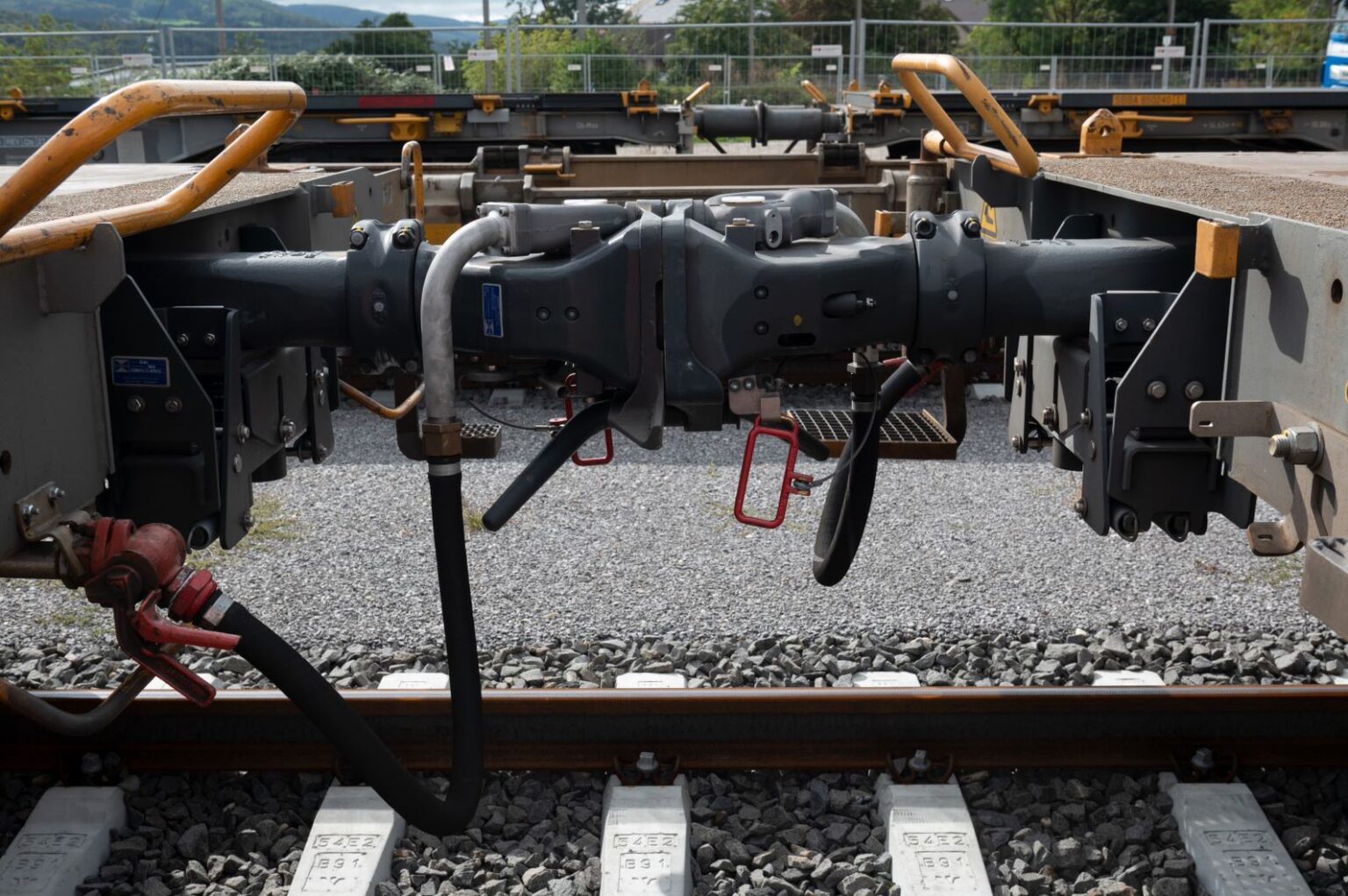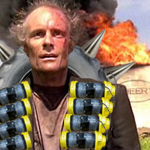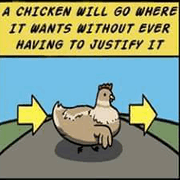|
Tex Avery posted:If you're serious, it's actually nothing to be concerned about. Power sharing is a thing that all of these Class 1 railroads do. Sometimes it's cheaper and more efficient to build a train on the BNSF in California and run it all the way to New York without having to stop to change out the locomotives once the train gets to, say, the first CSX railroad yard it passes. Just keep fueling the motors and keep rolling! The railroads all keep track of these power swaps and then bill each other for the time it was on another railroad. Ah, ok. Because the NS locomotive was the lead, I thought it would be an NS crew.
|
|
|
|

|
| # ? May 9, 2024 11:57 |
|
Full Collapse posted:Ah, ok. Because the NS locomotive was the lead, I thought it would be an NS crew. Nah, but that's a common misconception. Unlike truckers, they can't just hop on a train and take it coast to coast, pulling over to take rest periods and whatnot. A train conductor or engineer will only be qualified on certain routes, usually called subdivisions, all of which are in districts that a crew can qualify in. A district might only have one subdivision, or it might have five or six in an area like Chicago where there are multiple routes out of the same geographical area. Train crews doing long distance work, or "road jobs", in the US typically get assigned to a train coming out of their home terminal (usually with only two to three hours worth of notice that they're being assigned to said train), get on, do any brake tests that might be required, then take the train as far as time and traffic on that route allows them to go. When they hit twelve hours on duty, they'll be relieved by a fresh crew, then driven to a hotel for their mandatory rest period. At the end of the rest, the railroad figures out where they can use that crew again on a train headed back to their home terminal, and puts them on it to get back to home. That's the short of it, but getting into the thick of it requires breaking down several byzantine policies and procedures and lots of jargon.
|
|
|
|
Log082 posted:And that's the small live steam. Or you can make it the focal point of your family for 3 generations and sell tickets on weekends : https://www.youtube.com/watch?v=6iZ6r_75xE8
|
|
|
|
SwimNurd posted:IMHO run8 is the best for american railroads, but it is pretty hardcore. It is a huge train sandbox, with really good physics, that allows for multiplayer, dispatching etc. There is nothing currently that comes close, that said the it is really rough in some places and not the prettiest sim out there. Get Rolling Line on Steam. It's a model rail simulator that'll let you build the layout of your dreams, has excellent modding support, and works on desktop or VR. Even includes an option to scale down yourself and explore your layouts on-foot (and of course drive your trains).
|
|
|
|
Neddy Seagoon posted:Get Rolling Line on Steam. It's a model rail simulator that'll let you build the layout of your dreams, has excellent modding support, and works on desktop or VR. Bought on this recommendation. Very happy. Except now I’m watching YouTube videos on proper modelling of intermodal operations
|
|
|
|
So I am now finally cab certified. Starting next week I'll finally be able to accompany my team. I'm really looking forward to it. I'll try to write a "day in the life of a freight train engineer" post shortly.
|
|
|
|
we're all foaming with anticipation
|
|
|
|
|
Hopefully it goes better than BT4Com's day in the life of an Engineer story.
|
|
|
|
Today we had a visit by an esteemed member of SBB Historic. Ae 4/7 10976, built in 1932 and just back from a near yearlong overhaul of the main transformer. It's spending a few days in Lausanne and hauling a charter train on Thursday. On Friday it will be coupled to an ETCS level 2 capable loco for the trip back to its home depot in St Maurice. Engineer's view :  Hauled into the maintenance bay for storage overnight :   The business side of the Büchli drive : 
|
|
|
|
That's awesome.
|
|
|
|
Neat!
|
|
|
|
A day in the life of a train engineer at SBB Cargo. This wednesday I accompanied one of my engineers on a full shift from start to finish. If you want to follow along, I suggest you use this map : https://s.geo.admin.ch/9f3ffc4a1c The shift began at 14:03 sharp in Lausanne-Triage, with time for the engineer to prepare, update his iPad and documents, and get his locomotive ready, in this case an Re420. We got going early since the locomotive had already been through its daily full systems checkup with a previous engineer. We then drove to the assigned departure track, where a railyard employee hooked the locomotive to the waiting string of cars and performed the brake test. Our train was empty Hbbillnss wagons bound for the dairy factory in Estavayer-le-Lac, so light, short and fast (roughly 250 tons and 200m long, Vmax of 120 km/h). Scheduled departure time was 14:28, but we got to leave 10 minutes early. Waiting for the departure signal in Lausanne-Triage, the tail-end of the train to Brig is visible:  We made our way to Yverdon-les-Bains, where we handed off the train at 15:15 or so to an engineer from Biel who would drive the trainto its final destination and then continue on with a full dairy train to Biel. At Yverdon-les-Bains, we had a long unpaid break during which we had a coffee, chatted and waited for the regional train at 17:00, which would bring us to our next train in Chavornay at 17:09. In Chavornay,our train was waiting for us: a 20 car cement train partly bound for Lausanne-Triage. We would then continue with the front 5 cars for Genève-Praille:  The previous engineer had kindly already hooked the locomotive to the proper side of the train, so all that was left to do was a partial brake test : depressurize the brake line, walk to the rearmost car and check that the brakes there were tight. Walk back to the loco, repressurize the brake line, go back to the rearmost car and check that the brakes had loosened properly. Once all this was done, the engineer called the operations center to ask for the departure authorization. The locomotive being on the right side of the train was a substantial time saver, so we once again left early.  The engineer operating the Re620:  Quick explanation on the ZUB. The acronym stands for ZUgsBeinflussung, or train control. All signals and almost all speed limits are equipped with balises that communicate with the train. For example, should a train pass a caution signal, then the ZUB will tell the engineer to reduce his speed. If the calculated brake curve isn't followed, the ZUB will initiate an emergency brake. Another example is a speed limit : if the train travels too fast, the ZUB will initiate an emergency brake. It'll intervene in many other cases, the most serious of which is if the train runs a red. A daily task of mine is to process ZUB cases. The drive back to Lausanne-Triage was unveventful, and after only a short wait on the arrival tracks, the last 15 cars were unhooked and we made our way to Geneva. The line is extremely busy, with around 10 trains per hour per direction of mixed traffic from freight to regional to intercity trains. So we had to pull over and wait for a passenger train to overtake us. Quad-track with 2 Leman Express regional trains near Geneva:  Geneva :  Arrival in Genève-Praille :  At Genève-Praille, a railyard employee unhooked our string of cars, we shunted over to a siding and waited. Around 30 minutes after our arrival, we moved to a new string of cars bound for Lausanne-Triage, another employee hooked them to the loco and performed the brake test. Our new train was around 400m long and over 1000 tons. We waited until our scheduled departure time and left. The line from Genève-Praille to Genève-Cornavin (the main passenger station) goes up a steep tunnel, so the engineer unleashed the full 10'700hp of the Re620. It was impressive seeing the ammeter jump to 3000 amps. That's an unbelievable amount of current. We trundled through Geneva, waited once more at the overtake siding for an intercity train to go past and then made our way to Lausanne-Triage. The Geneva-side entrance is a bit awkward since it crosses over the opposite track. We arrived on time, but lost 15 minutes in the last few hundred meters, as the path to the arrival tracks is shared with the hump, and the yard was busy. We then unhooked our string from the loco and parked it. The shift ended at 22:05 instead of the planned 21:47. All in all, a pleasant, stress-free day. There are many other kinds of shifts, and sometimes things go very wrong, but Wednesday was a good day. Noosphere fucked around with this message at 11:06 on Dec 18, 2023 |
|
|
|
That's so cool! Is it normal for the drivers to jump from one locomotive to another upon arriving at a particular point? What I typically see in the US is a crew keeping the same locomotives for an entire run, maybe moving them from one train to another at a yard. Also, holy poo poo, 10,700 HP!!
|
|
|
|
Quote does not equal edit
|
|
|
|
That was a fantastic write-up, thank you!
|
|
|
|
Tex Avery posted:That's so cool! Is it normal for the drivers to jump from one locomotive to another upon arriving at a particular point? What I typically see in the US is a crew keeping the same locomotives for an entire run, maybe moving them from one train to another at a yard. Yes, it's very normal for a train to have multiple engineers from beginning to end. It's a side effect of geographical and time constraints :
All these factors, as well as train schedules, train path availability and customer requirements are all fed into the optimization process at headquarters, then further refined by the short-term planners in the depots. As a result, the most optimal way to dispatch personnel, especially during the day when the network is extremely busy and there's a lot of waiting, is to break the trip into small pieces. Log082 posted:That was a fantastic write-up, thank you! You're welcome !
|
|
|
|
Thanks for that trip report Noosphere - I really enjoy these insider insights. In that vein, this video floated to the top of my YouTube recs yesterday: https://www.youtube.com/watch?v=y4a1R0VBwD4 Fast Freights on the Baltimore & Ohio, 1954. There's something that's both a bit funny but genuinely likeable about the bombastic narratives these 1950s info films spin - the companies behind them were very self-aware of their own importance, history, how much of the economy they moved and the intrinsic theatre of a mile of freight cars moving at 60mph with 6000 streamlined horsepower at the head. Not so keen on the very 1950s decision to call the train/loco 'Big George' and to refer to all the cars as 'his ladies'... It's got some interesting camera angles that can't have been easy to get with 1950s equipment - close-ups of the couplers flexing in and out, the brake rigging moving and the car wheels rattling over track joints and switches at speed. One question - at the 5:00 mark there's a shot of a Wabash boxcar with the comment that "she hasn't been home in six years - not lost, just travelling". What was/is the arrangement with cars working between different railroads in the US? In Britain the private companies were quite jealous of their stock. Wagons with loads could roam quite freely between systems (with each company the wagon travelled over receiving a share of the income) but any wagon unloaded in 'foreign territory' had to be returned to its home network, empty and as soon as possible. This led to a lot of wagons trundling around carrying nothing but air, and lots of trains of empties clogging up the network, so by the 1900s various railways had formed traffic agreements with each other - so for instance the Midland and the London & North Western could use each other's wagons on their networks so long as they were carrying loads and were travelling in a vaguely homeward direction. Just before WW1 the Great Northern, Great Eastern and Great Central agreed to common working of a large proportion of their respective wagon fleets. During WW1 wagons were all 'pooled' for ease of operation and after the war this was retained - all the 'standard' wagons of the Big Four (open general merchandise wagons and covered vans, both of the usual 9ft wheelbase and not fitted with vacuum brakes) were pooled and could be used for any purpose, by any company, anywhere in the country. Wagons would also be inspected, maintained and repaired at the nearest wagon works, although the owning company would foot the bill. This meant that you could see Southern Railway wagons in the far north of Scotland, or LNER vans in deepest western Wales, and wagons could get 'trapped' in foreign territory for years at a time (which is what the B&O film seems to imply happened to that Wabash boxcar?). Specialist wagons - flatcars, container wagons, tankers, fish vans, grain hoppers, anything long-wheelbase, with high-speed axle boxes or with vacuum/air brakes - wasn't pooled and was marked up as 'Non Common User' and these still had to be returned to their home system ASAP once they had delivered their cargo, and often carried an instruction of where exactly it had to be returned to if found 'off-system' painted on the side. The exception was cattle wagons, which were pooled from the mid-1920s between the LMS, LNER and SR (the GWR ones were not pooled since they had non-standard brakes). Wagons were pooled again in WW2 and then once nationalisation happened they all become part of the same operation and so began to mix quite freely. If, as per the video, a Wabash boxcar could spend six years without travelling on Wabash rails, that implies that there was a similar pooling arrangement? Or was it a case of various alliances and agreements between specific railroads? Some other videos that I've seen recently that the thread may enjoy: https://www.youtube.com/watch?v=svZVzq-3W68 "Assembling a Freight Train" on the Santa Fe sometime in the early 50s. Amazing how labour-intensive it all is - numerous switching/trip movements, cars being sorted by direction, destination, delivery order and so on, endless numbers of paper waybills being tacked on the sides, duplicated, stacked, sorted, typed, transmitted and passed between armies of clerks, yardmasters, dispatchers and conductors. https://www.youtube.com/watch?v=fXcD6ZdPR9k "Last of the Giants - Big Boy" - a publicity film from the UP on the demise of the Big Boys. Some more brilliant purple prose here: Union Pacific posted:"Theirs' was a call to dreamers of every age, wafting them from humdrum schoolroom or office to fancied adventures on the High Iron... You don't get PR films with scripts like that any more!
|
|
|
|
BalloonFish posted:
Great post ! I'll focus on this video for now. The processes haven't changed much in 75 years : there are simply more computers and far, far fewer people involved. Paper handling, of course, but also nearly every step of the yard work apart from (de)coupling, and inspecting the wagons for safety is automated. And there is a slow-moving project to implement totally automated Scharfenberg couplers for freight wagons. These would also allow for the automation of brake checks, as in modern passenger trains. 
|
|
|
|
Noosphere posted:Great post ! I'll focus on this video for now. The processes haven't changed much in 75 years : there are simply more computers and far, far fewer people involved. Paper handling, of course, but also nearly every step of the yard work apart from (de)coupling, and inspecting the wagons for safety is automated. And there is a slow-moving project to implement totally automated Scharfenberg couplers for freight wagons. These would also allow for the automation of brake checks, as in modern passenger trains. Here's the British equivalent of that Santa Fe film: https://player.bfi.org.uk/free/film/watch-fully-fitted-freight-1957-online The life and times of the 4:48pm fully fitted fast freight from Bristol to Leeds.
|
|
|
BalloonFish posted:One question - at the 5:00 mark there's a shot of a Wabash boxcar with the comment that "she hasn't been home in six years - not lost, just travelling". What was/is the arrangement with cars working between different railroads in the US? In the US, railcars on foreign rail were and are interchanged between railroads constantly but not without cost. A railcar on foreign rails can be used by the foreign railroad for its own cargo loading purposes, since it is in everyone's best interests to minimize non-revenue car movements, but the car's owner receives a per-diem payment for each day the car is on foreign rail. There are even companies like Railbox built entirely around having a fleet of cars generating per diem revenue despite not having a home railroad. Reporting marks for cars without a home railroad will always end in an "X" to designated this, which is why CSX had the reporting marks "CSXT." Per diem will also reverse in the case of a railroad storing cars for another railroad, which can provide some good revenue for some shortlines. (The Reading and Northern routinely uses the old PRR mainline to store tank cars and the like. Right now they are storing rotary dump gons) This interchange of cars is why railroads would routinely put slogans, heralds, and use elaborate paint schemes on boxcars, as interchanged railcars would act as rolling billboards for the railroad, both for passenger and freight service. There are exceptions to this interchange of cars, such as specialized equipment for an online customer, unit trains that originate and end on the same railroad, and older equipment usually used for MOW, which usually are stenciled as "not for interchange."
|
|
|
|
|
Railbox was developed to sidestep per diem, not to profit from it. In the 1970s, there was a huge wave of boxcar retirements and to encourage the purchasing of new ones, the regulators tweaked the rules surrounding how per diem rates worked. It was a cash cow for a lot of short lines who pretty much just had to lease out their reporting marks to the actual boxcar owners. They were a rather motley collection of roads and paint jobs. They were quite popular with photographers and modelers. There's also plenty of them still out there on their fourth or fifth owner. It actually didn't work out. The railroads had a better idea of the situation at the time (this was pre deregulation) and weren't too worried about the looming "shortage." Railroads knew that a lot of boxcar traffic was already lost to trucks, but they were also surging buying of new types of railcars. Remember, grain was still moving in boxcars into the early 70s. They knew that they wouldn't need that much longer as more covered hoppers were delivered. They were also counting on deregulation to open up intermodal. Their plan was to direct money to their existing pool company: Trailer Train. TT formed a subsidiary in 1974, in parallel to the regulators work. That became Railbox. Because they were in pool service to the pool members, they were functionally home road cars and immune to the per diem rates. Within seven years, between Staggers, the early 80s recession, and the railroads having been correct about their fleet make up, the per diem exploit collapsed. There was suddenly a huge glut in the boxcar fleet and those boxcars were returned to their home rails at short lines who couldn't even store them all. They were sold off en masse and I believe a good number of them even because Railbox property.
|
|
|
|
TT is now TTX and owns a poo poo-ton of the actual cars the now carry freight, especially intermodal wells? Does it work like in the Airline industry where the rail companies run and maintain the cars like they were their own but TTX takes care of the risk and the leasing?
|
|
|
|
jadebullet posted:In the US, railcars on foreign rail were and are interchanged between railroads constantly but not without cost. A railcar on foreign rails can be used by the foreign railroad for its own cargo loading purposes, since it is in everyone's best interests to minimize non-revenue car movements, but the car's owner receives a per-diem payment for each day the car is on foreign rail. Sash! posted:Within seven years, between Staggers, the early 80s recession, and the railroads having been correct about their fleet make up, the per diem exploit collapsed. There was suddenly a huge glut in the boxcar fleet and those boxcars were returned to their home rails at short lines who couldn't even store them all. They were sold off en masse and I believe a good number of them even because Railbox property. Thanks - so similar to the working agreement era of British railways, but with the crucial difference that foreign cars are charged per diem. And, without a specific inter-company agreement, foreign cars could not be used for revenue purposes by the host. That had to wait for the post-WW1 pooling system. British practice was to charge customers and wagon owners by the mile - loads attracted standardised and (legally defined and enforced) rates per mile. The mileage any given wagon travelled from origin to destination, and the route by which it did so, was closely monitored and every company that owned track that wagon passed over was allocated a portion of the overall fee payed by the customer on a straight portion basis (if a wagon travelled half its distance on the Midland, a quarter of its distance on the LNWR and the other quarter on the Caledonian, the rates would be split 50% to the MR and 25% each to the LNWR and the Caley) but with an adjustment to allow an extra portion to go to any company that actually operated a train the wagon travelled in - so if the MR provided the initial engine, brake van and crew, then handed the wagon over to an LNWR train which then ran to the destination due to trackage rights with the Caledonian, the Midland and the North Western would get more of the share and the Caley would get less...unless those trackage rights had been agreed via some other adjustment of the mileage rates. This byzantine system was run and managed by the Railway Clearing House, which maintained an army of clerks and inspectors around the country as well as huge regional and central offices tracking wagons, keeping running totals of mileage run and consulting vast tomes which adjustments to the standard rates applied to which companies and between which geographical spots on the network. If you look at old OS maps you'll see lots of railway sidings marked 'Mileage Sidings' - every goods station will have at least a couple. This was where wagons charged basic mileage (with no further charges or services) were picked up, marshalled and dropped off. On top of the basic mileage charge the railways could add cartage, standage and demurrage charges. Cartage was the fee for loading/unloading the wagon, with the option of extra charges to collect and deliver the cargo from door to door. The railway companies would gladly charge for this, but economy-minded customers could take on the logistics and manpower of physically taking the cargo on and off the wagon themselves. Paying cartage usually ensured that the wagon (or at least its load) would be accommodated in a goods shed or (as appropriate) on a siding with a loading ramp or crane rather than on a plain unadorned mileage siding. Standage was the charge for use of the physical track space on which a wagon stood. After a wagon arrived at its destination (and absent of any other factors or regulations), the customer had two days' grace to have the wagon unloaded and available for further use, after which standage fees applied at a per diem rate. Demurrage was charged when the customer was using a railway-owned wagon and exceeded the two days' grace period. Large customers could avoid standage by having their own private sidings (which simply incurred an annual connection fee) and demurrage by owning their own wagons. Wagon ownership was very easy and cheap in the pre-WW2 era so even small companies often found it more economical to own their wagons and avoid demurrage but pay standage. In the 1950s one of the many financial millstones around British Railways' neck was that the standage and demurrage charges were massively out of date and no longer remotely reflected the costs incurred to the railway. They were so low compared to other typical business expenses that many customers were having goods delivered in closed vans (which incurred premium demurrage rates over open wagons) and then not unloading them for months or years at a time because paying BR standage and demurrage was cheaper than renting or paying business rates on warehouse space.
|
|
|
|
Jonny Nox posted:TT is now TTX and owns a poo poo-ton of the actual cars the now carry freight, especially intermodal wells? TTX is a weird federally permitted monopoly for railcar pooling that's owned directly by the railroads. TTX owns and maintains all its own assets on behalf of its owners. They actually have their own repair shops that do a lot of the work. The cars are TTX branded (or railbox or railgon, the two subsidiaries).
|
|
|
|
Jonny Nox posted:TT is now TTX and owns a poo poo-ton of the actual cars the now carry freight, especially intermodal wells? Yes, Trailer Train became TTX in the early 90s. Part of the rebrand was that they'd expanded into boxcar and gondola ownership (Railgon). The original plan for Trailer Train was to start to settle the standardization issue that was emerging in the 1950s for handling trailers. The Pennsylvania was the biggest driver behind it, supplanting their own Truc Train service. They were not creative about the names. The bulk of the fleet is their intermodal, which is why you see so few railroad intermodal. The only ones I know of off the top of my head are BNSF, FEC, and CP wells I've seen. FEC isn't a shareholder of TTX either. Aside from specialized lumber and steel flats, they've effectively taken over flat cars from the railroads. There's also the autoracks, which fall into a weird place. Maintenance is a complicated matter because railroads do a lot of repair work on each other's property out of practicality. I know that TTX has their own shops, just like the railroads, so they're likely sending equipment to those for serious work. I'd wager they do treat them like foreign road equipment, in that they'll do the bare minimum to keep it in service or at least enough to drag it back to a TTX shop. Which brings me back to the autoracks. The actual flat under there is owned by TTX and is, in theory, just an 89 foot flat like any old flat car handling pipe. The rack is owned by the railroad, which is why autoracks have a TTX reporting mark, are yellow, and have a TTX logo on them below the deck. The rack with UP on it is UP's. How they handle that for maintenance purposes is unclear to me.
|
|
|
|
Sash! posted:Which brings me back to the autoracks. The actual flat under there is owned by TTX and is, in theory, just an 89 foot flat like any old flat car handling pipe. The rack is owned by the railroad, which is why autoracks have a TTX reporting mark, are yellow, and have a TTX logo on them below the deck. The rack with UP on it is UP's. How they handle that for maintenance purposes is unclear to me. I assume similar to how motorhomes are handled here in the states. The boogies, brakes, etc are handled by ttx while the upper structure would be a UP or whoever's problem. Thus, that old video of an autorack getting the top peeled by going into a tunnel that it was too high for would by UP's problem as the base frame provided by ttx was fine. Also, another perhaps more closer example to all this is in trucking. At least here, there is xtra and premier that do leasing. I've seen several that amazon has leased. And I wouldn't be surprised if even the actual prime labeled trailers are in fact leases as well.
|
|
|
|
They definitely could be, but that's still a different business model - TTX is effectively a cost center for its owners and a mechanism to hold assets and utilize them more efficiently. That's different from a leasing company that intends to make a profit off of leasing and servicing assets.
|
|
|
|
KYOON GRIFFEY JR posted:TTX is a weird federally permitted monopoly for railcar pooling that's owned directly by the railroads. I got thinking about this and I figure that it might have ended up that way even if the STB hadn't allowed the pooling agreement. I could see a scenario where specialized intermodal cars were largely owned by one or two major fleets like tank cars are. I wouldn't be surprised if GATX and UTLX control 70 or 80 percent of the tank cars. The only other players are Procor, which just Canada UTLX, and Trinity's leasing fleet. After that, you're either Exxon or Shell.
|
|
|
|
If the pooling agreement hadn't been arranged, it's definitely possible that there would have been a concentrated third party lessor and I think you're probably right that it would have ended up that way. Got me to thinking - how do hopper cars work?
|
|
|
|
Railroad owned ones are like any other interchange car, although plenty never really leave the property. They'll just move between the origin and destination on the same railroad. Leased equipment, like TILX, fits into two categories. Some leased equipment is filling in gaps in a certain route. I recall in my hometown, the CN filled in leased hoppers while they were retiring B&LE hoppers and awaiting the delivery of new equipment. Or either the shipper or receiver leased them to have a more reliable car supply or to use them as rolling storage without having to pay as much as if they were holding railroad owned cars. There's also a decent fleet of privately owned cars. I see a train of SCWX cars come through DC often. They're originating in Shire Oaks, about an hour south of Pittsburgh, and end up somewhere in South Carolina. They're owned by Santee-Cooper. My understanding is that the rates are lower for private cars, as the burden of maintenance is on someone else. They're fully captive and you won't see them anywhere else. Unless Santee-Cooper leases them out, which they're fully capable of doing.
|
|
|
|
Speaking of oddball/non-standard TOFC, thanks to this video I recently learned that the Reading, and by extention the B&O and CNJ, ran a service hauling TOFC automobile trailers loaded with Ramblers. https://youtu.be/FWooYUdccPM
|
|
|
|
|
Noosphere posted:Great post ! I'll focus on this video for now. The processes haven't changed much in 75 years : there are simply more computers and far, far fewer people involved. Paper handling, of course, but also nearly every step of the yard work apart from (de)coupling, and inspecting the wagons for safety is automated. And there is a slow-moving project to implement totally automated Scharfenberg couplers for freight wagons. These would also allow for the automation of brake checks, as in modern passenger trains. We were docking spacecraft together over 50 years ago!
|
|
|
|
As is usually the answer for such simple questions, the answer is money. Developing and adopting a standardized, fully automatic coupler that can withstand the forces put upon couplers, especially on American trains, and then retrofitting hundreds of thousands of cars and thousands of locomotives, would cost way more money than anytime is willing to spend.
|
|
|
|
BalloonFish posted:British railcar stuff Fascinating post. I can scarcely imagine the armies of clerks and tens of thousands of pages of largely manuscript forms it took to get this sytem to work. This entire discussion about railcars has been very interesting, thank you all for your contributions. I personally can't add much, because I don't handle cars in my daily business, and have little contact with those who do. On my side, I got up nice and early for a day with another engineer. The shift began at 03:54, with a long wait for the planned ETCS level 2 capable Re 420 to arrive in Lausanne-Triage. Locomotive resources are used with maximum efficiency (or less charitably, streched to their limit), so having to wait for a loco to turn up is commonplace. At least the wait time is compensated by the fact that the full startup routine doesn't need to be done in such a case. We went to hook up a waiting string of cars and left immediately. As usual, you can follow along geographically here : https://s.geo.admin.ch/9f5162fcfc Our first stop was after only a few kilometers : we cut the last 2 cars in Renens-Triage and then set off towards our final destination in Villeneuve with 800 tons of construction site overburden. Time was tight since we only had 10 minutes to cut the cars. A particularity of the Simplon Line is that between Pully and Roche is it fully ETCS level 2, with in-cab signalling. Problably one of the slowest lines in the world to have that technology, since the Vmax for the twisty, heavily urbanised line is almost always below 100 km/h. We arrived in Villeneuve, cut the string of cars off the locomotive and then ran back to Lausanne-Triage as a single loco. ETCS level 2 cab signal locators. Basically each blue sign with an arrow on it marks the physical location of your in-cab signal:  The famous Chillon Castle:  Quad tracks and a flyover between Lausanne and Renens:  https://www.youtube.com/watch?v=iwVQozZwE7w After a break, we left for Geneva with a passenger train, but due to heavy delays, missed our initial connection, and got every further delayed (it was a really really bad day for passenger rail, with a 15 minute delay on mainline trains). So we made it late to our train in Genève-Praille and without yard staff on hand, hooked up the cars (I got to help with the brake test Elukka posted:No matter how familiar I am with it, or how many times I read the reasons why, it's always really, really weird that railroad couplers are not fully automated in the year of our lord 2023. And of course here in Europe we've got real old school buffer and chain for the most part, but all the American and Russian automatic couplers still need manual brake hose connections anyway. Agreed. One reason why it's taking so long is that no one can agree on a european standard. The SBB is waiting on the EU to move, but if nothing happens, the plans seem to be to convert all in-Switzerland traffic wagons to automatic couplers within the next several years. For now, all in-Switzerland intermodal wagons use semi-automatic couplers (Scharfenberg with manual hoses), as a sort of pilot project.
|
|
|
|
I think it’s been said before, but US railroads are the epitome of running a lean business.
|
|
|
|
Noosphere posted:
As a former frequent Amtrak rider (and not just the NE corridor), one of the best things about living in Switzerland now is that fifteen minute delays really are considered a very bad day.
|
|
|
|
Tex Avery posted:As is usually the answer for such simple questions, the answer is money. Developing and adopting a standardized, fully automatic coupler that can withstand the forces put upon couplers, especially on American trains, and then retrofitting hundreds of thousands of cars and thousands of locomotives, would cost way more money than anytime is willing to spend. I worked the numbers on this for a paper in grad school and it was an astoundingly high number. Like "you're better off just paying the labor costs indefinitely" high.
|
|
|
|
Same kind of thing applies to the electropneumatic brakes that the media latched onto after East Palestine. I ran some very, VERY conservative estimates on the cost of converting the entire combined US/Canada/Mexico interchange fleet and it came out to something like $600 BILLION dollars. Nobody will EVER pay that cost voluntarily.
|
|
|
|
Sash! posted:The only other players are Procor, which just Canada UTLX, i see a lot of Procor tank cars coming through PDX, do they not obey geographic borders?
|
|
|
|

|
| # ? May 9, 2024 11:57 |
|
ChickenOfTomorrow posted:i see a lot of Procor tank cars coming through PDX, do they not obey geographic borders? They do not. Back in the old days, UTLX was Union Tank Car and was the main builder of tank cars in the US. Products Tank Line was the Canadian subsidiary of Union. Pre NAFTA, there were more controls on cross border railcar traffic for a huge variety of reasons, including protecting the Canadian fleet from becoming captive in the US. There were cars specifically marked for cross border service. I believe that's the origin of Canadian National using the CNA reporting mark alongside CN. When the trade laws changed, the line became less important. Especially because the railroads weren't as restricted to their own countries any more anyhow. UTLX and Procor are both part of Berkshire Hathaway now too. They're simply the US and Canadian sides of the same company. UTLX has always been mixed up with super huge businesses and deep pockets. Union was one of the companies that fell out of Standard Oil back in the day and the Union in the credit report business TransUnion is directly tied to UTLX.
|
|
|


























